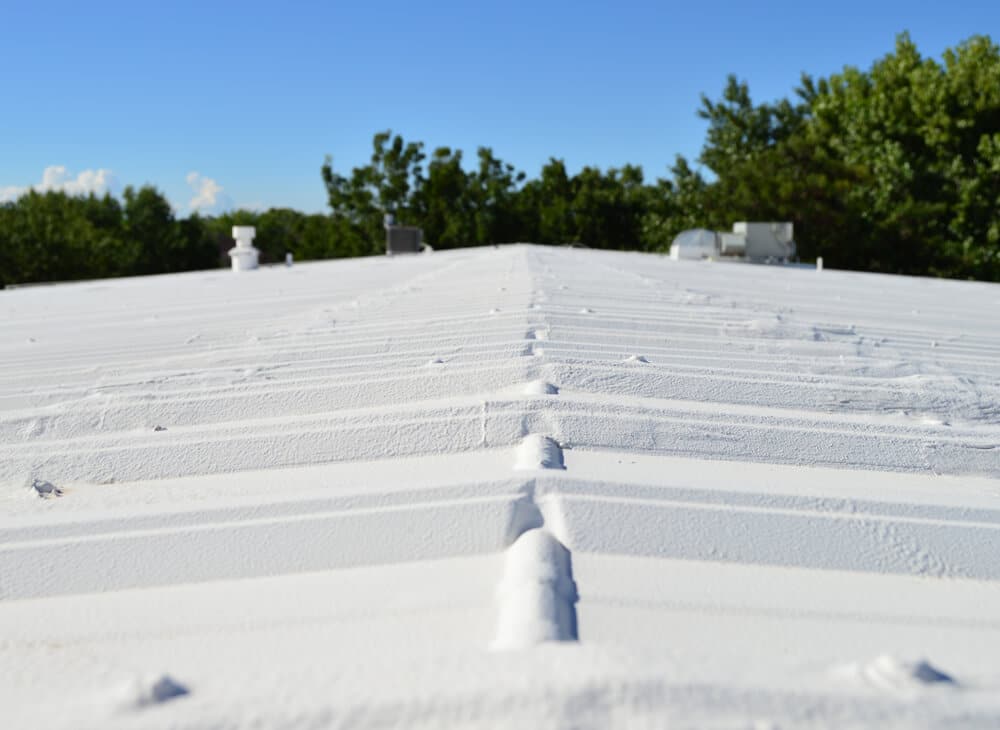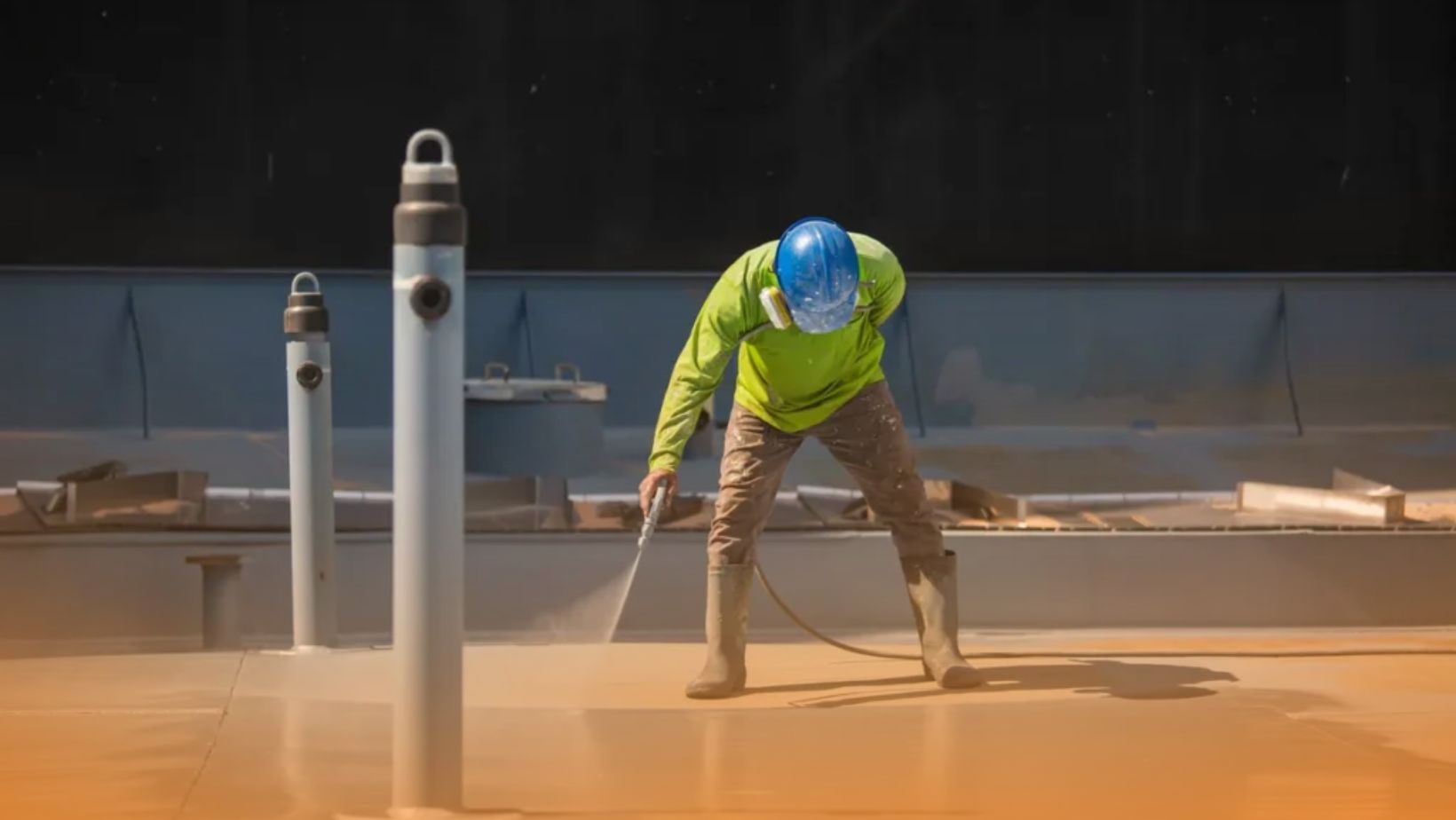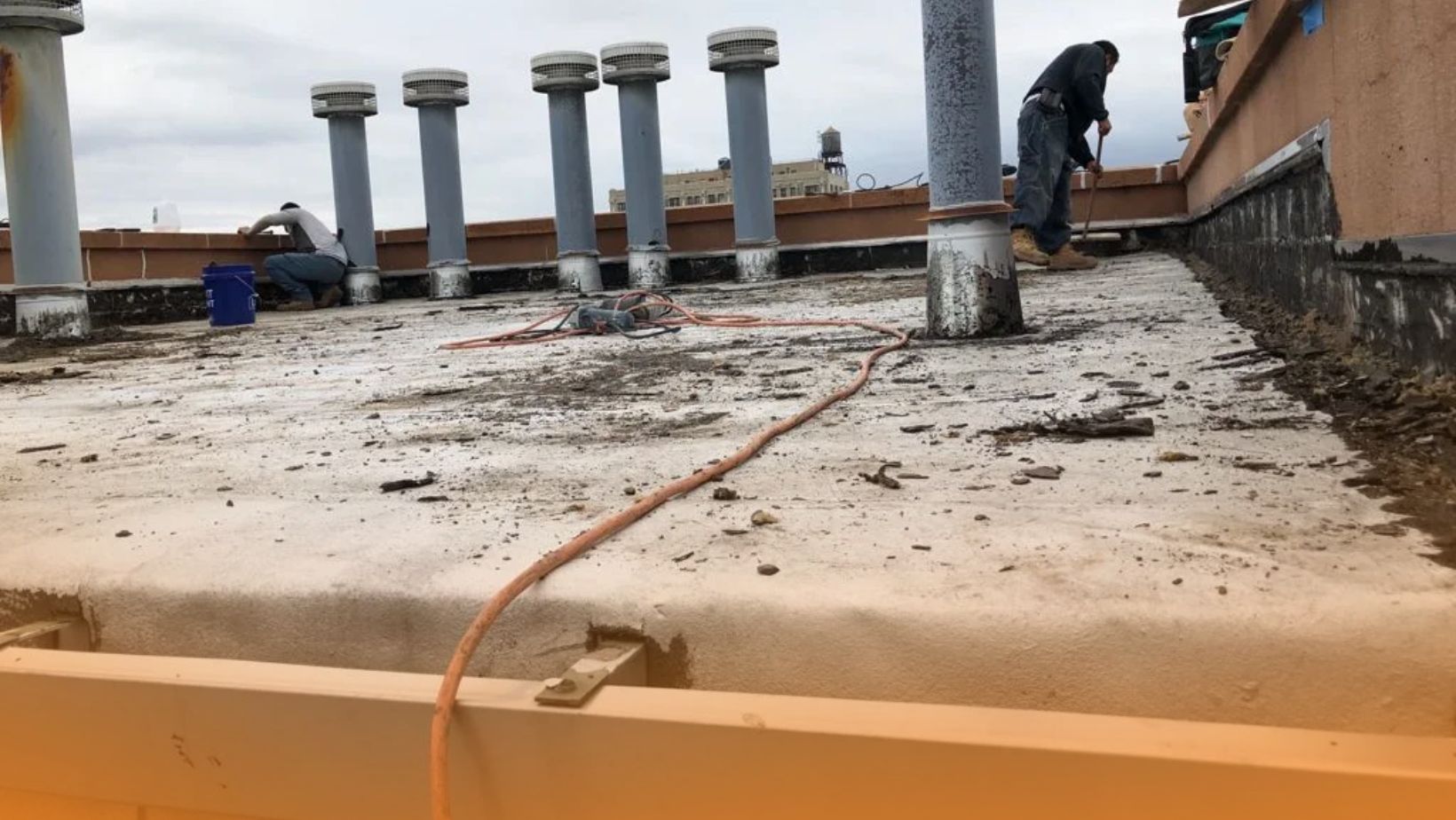Are you contemplating investing in SmartSeal’s commercial roof coatings? If so, you’re on the right track to unlock significant long-term savings and a multitude of benefits for your building. This blog post will guide you through the economics of SmartSeal’s commercial roof coatings costs vs savings, including initial investments, long-term savings, energy efficiency gains, stormwater management, and government incentives. Discover the true value of cool roof systems and make an informed decision about your roofing investment.
Key Takeaways
-
- Investing in cool roof systems can provide businesses with long-term financial savings and environmental benefits.
-
- A lifecycle economic analysis of commercial roof coatings is a useful tool for evaluating the cost vs benefit of investments.
-
- Strategic planning, timely investment, and selecting the right products & partners are essential for successful outcomes when coating or replacing roofs.
Initial Investment vs. Long-Term Savings of Roof Coatings
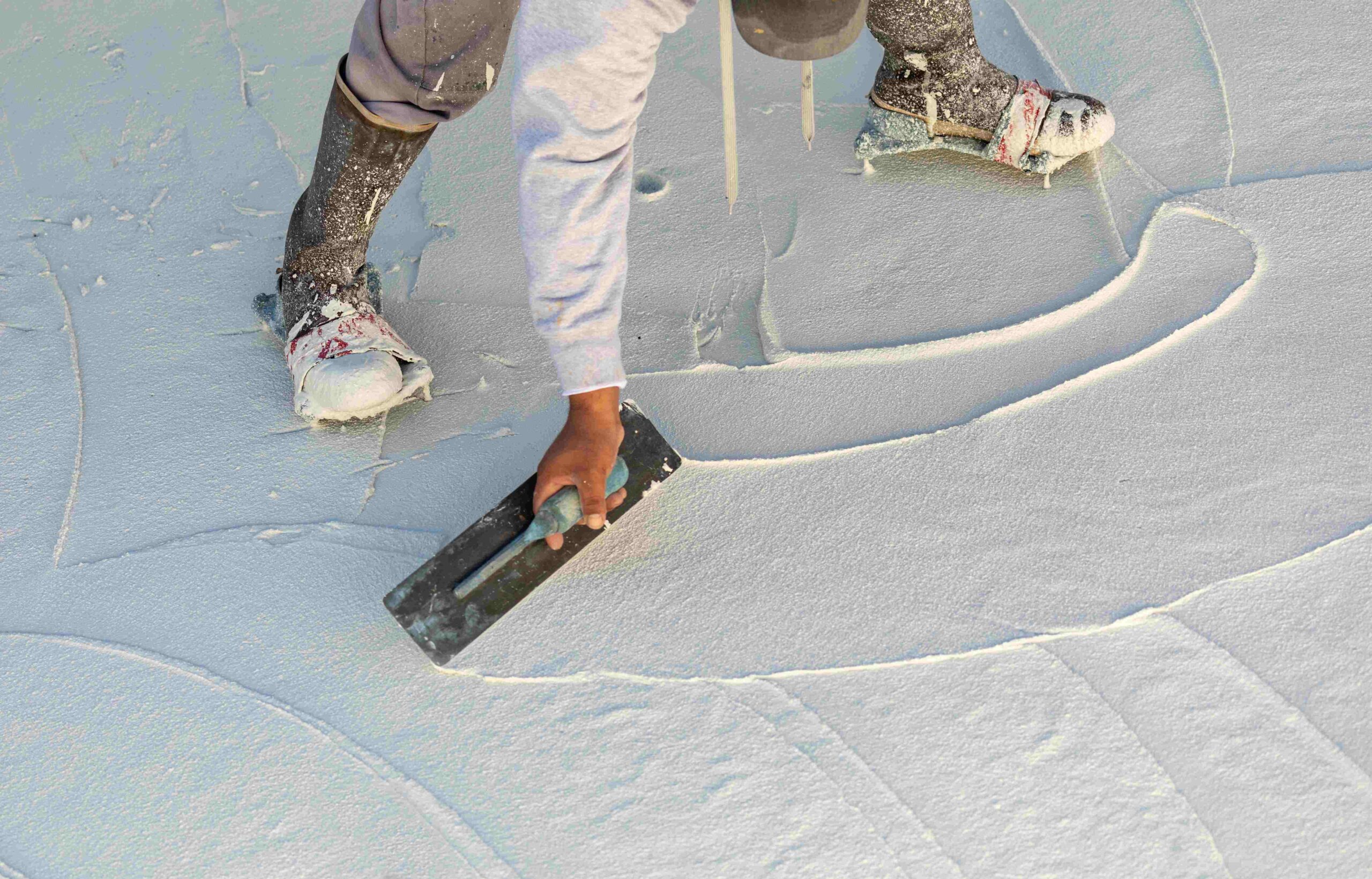
Though SmartSeal’s commercial roof coatings have higher initial costs than traditional roofing materials, they can yield substantial savings in the long run. The benefits of roof coatings, such as energy savings from cool roofs and lowered maintenance expenses, render them a wise investment. In fact, the cost range for roof coatings and membranes in the US is estimated to be $10-30/m2 ($1-3/ft2), making it a more cost-effective alternative to full roof replacement in many cases.
Yet, how do these upfront costs measure against potential savings in energy and maintenance?
Breaking Down Installation Costs
The cost of installing roof coatings can fluctuate based on factors like the size and condition of the roof, as well as the selected materials. Costs can range from as low as $0.25 per square foot for basic acrylic sealant to $2.50-$5 per square foot for coating a metal roof with a slope. Although these costs might appear steep compared to conventional roofing systems, the long-term financial savings offered by roof coatings, like diminished energy use, lower maintenance expenses, and extended roof life, should be taken into account.
Projecting Energy Cost Reductions
Cool roof systems, engineered to reflect solar energy and minimize heat retention, can drastically cut energy expenses for commercial buildings. According to the U.S. Department of Energy, solar-reflective roofs can reduce cooling energy demand by 10-40%. This translates to up to 15% savings on annual cooling energy costs.
With an investment in roof coatings, businesses can realize energy savings that directly benefit their bottom line and promote a greener, more environment-friendly building.
Calculating Maintenance Savings
Beyond energy savings, roof coatings can also trim maintenance costs. By extending the life of the existing roof and enhancing its performance, businesses can save approximately 25 cents per square foot annually in maintenance costs. Moreover, a properly maintained coated roof can last up to 10-15 years longer than an uncoated one, reducing the need for costly replacements.
Hence, roof coatings present a durable, cost-efficient solution that aids businesses in cutting down roofing expenses.
The True Value of Cool Roof Systems
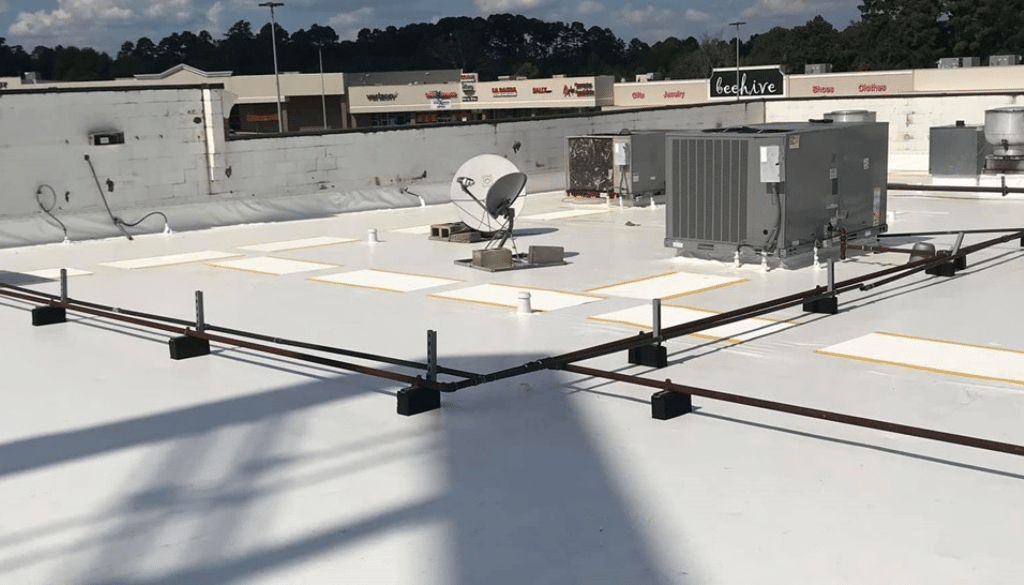
As energy efficiency and sustainability gain importance globally, cool roof systems present numerous benefits for commercial buildings. By reflecting sunlight and minimizing heat absorption, cool roofs provide both energy efficiency gains and help mitigate the costs associated with urban heat islands.
Hence, businesses investing in cool roof systems can reap not just financial savings but also a positive environmental impact.
Energy Efficiency Gains
Energy-efficient cool roofs provide various benefits, from lowering indoor temperatures to lessening dependence on air conditioning systems, thus cutting back on energy usage. Energy savings cool roofs can provide up to 15% savings on annual cooling energy costs, making them an attractive investment for businesses looking to reduce their operating expenses and environmental impact.
By reflecting sunlight and reducing heat absorption, cool roofs contribute to a more comfortable indoor environment while also saving energy. These benefits are achieved by minimizing the impact of heat absorbing surfaces on the building’s overall temperature.
Mitigating Urban Heat Island Costs
Urban heat islands, leading to elevated temperatures and amplified energy demand, are an escalating concern in many cities. The urban heat island effect can be combated with the implementation of cool roofs, which help by reflecting sunlight and reducing heat absorption, leading to potential savings in public health and infrastructure costs.
Moreover, studies have shown that cool roofs are more effective than green roofs in reducing urban temperatures, particularly at night. By investing in cool roof systems, businesses can contribute to a healthier urban environment and enjoy long-term cost savings.
Lifecycle Economic Analysis of Commercial Roof Coatings
A lifecycle economic analysis of commercial roof coatings can provide valuable insights into the long-term benefits and return on investment associated with these systems. By comparing initial costs with lifecycle benefits, businesses can make informed decisions about their roofing investments and maximize the value of their commercial roof coatings.
Initial Costs vs. Lifecycle Benefits
While the initial costs of roof coatings can be higher than traditional roofing materials, the potential long-term benefits should not be underestimated. As mentioned earlier, cool roof systems can significantly reduce energy consumption and maintenance costs. Furthermore, the average lifespan of a coated roof can be significantly longer than that of an uncoated one, offering additional cost savings in the long run.
By carefully considering the initial costs and weighing them against the potential lifecycle benefits, businesses can make informed decisions about their roofing investments.
Case Studies and ROI Metrics
Case studies and ROI metrics can help demonstrate the financial advantages of commercial roof coatings. For example, energy efficiency gains from cool roofs can result in annual energy savings and reduced cooling demand. Additionally, roof coatings can extend the useful life of a roof, decreasing the need for costly replacements.
By examining these case studies and ROI metrics, businesses can better understand the true value of investing in commercial roof coatings and make informed decisions about their roofing projects.
Green Roofs: A Sustainable Investment
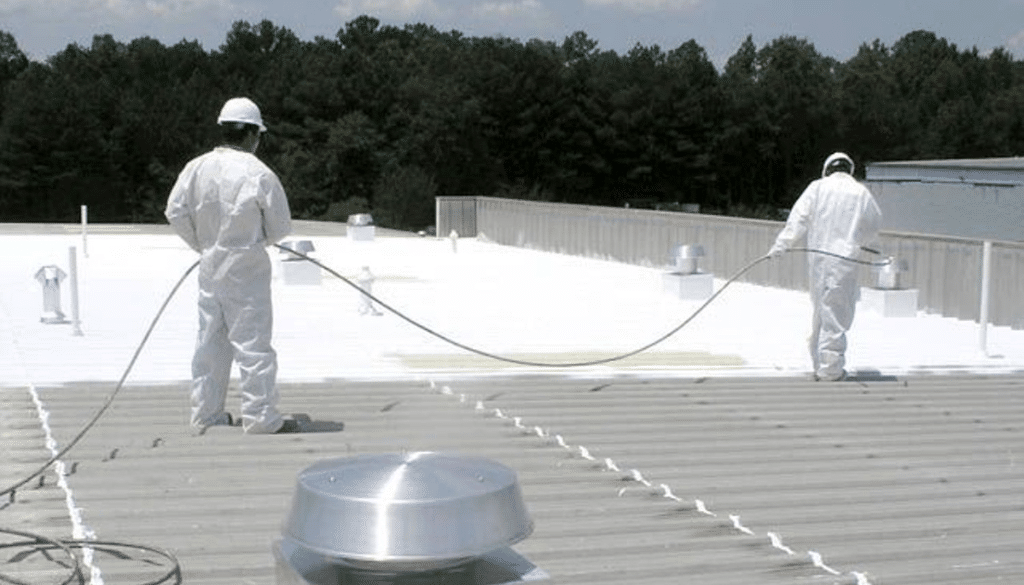
Green roofs, blanketed with vegetation, present a sustainable investment with multiple benefits like stormwater management savings and augmented building valuation. Although the initial costs of green roofs can be higher than white and cool roofs, they provide long-term cost savings and environmental benefits that make them an attractive option for businesses looking to invest in sustainable building practices.
Stormwater Management Savings
Green roofs hold a significant role in stormwater management, capturing and retaining rainwater from each storm, cutting down the volume of runoff, and mitigating pollution from urban runoff. This not only mitigates flood risks but can also save businesses money on stormwater management costs.
Green roofs can capture nearly all storm-related precipitation during the summer months and up to 20% during the winter months, providing a cost-effective solution for businesses looking to invest in sustainable building practices.
Enhancing Building Valuation
In addition to stormwater management savings, green roofs can also provide the following benefits:
-
- Increase the overall valuation of a building by attracting eco-conscious tenants and commanding higher rental rates
-
- Improve the marketability and resale value of a property
-
- Enhance a building’s value and environmental impact
These benefits make green roofs a smart investment for businesses.
Financial Incentives and Rebates for Cool Roofs
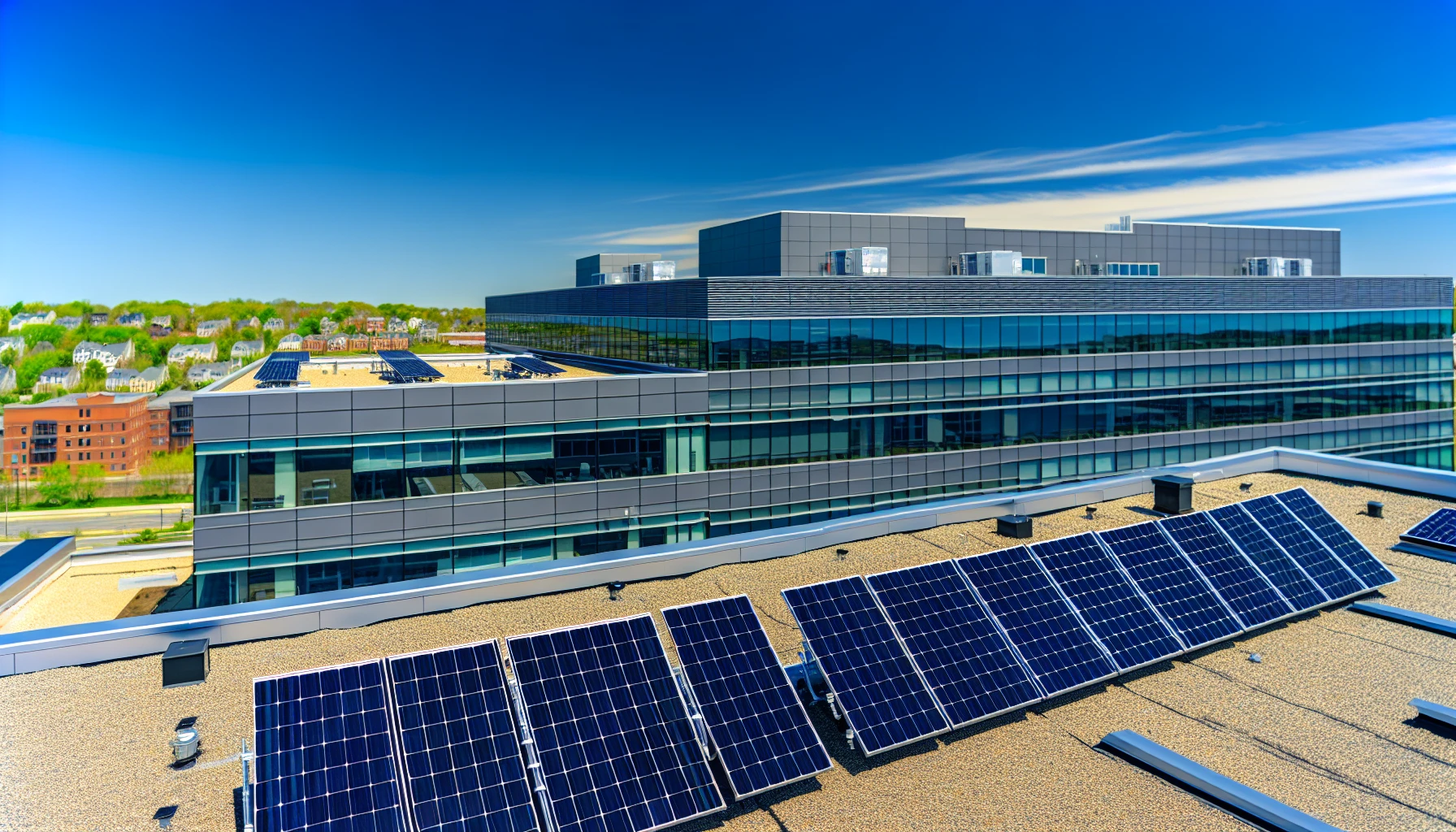
Financial incentives and rebates for cool roofs can amplify the economic benefits of roof coatings. By taking advantage of these programs, businesses can offset the initial costs of cool roof installations and maximize the energy efficiency gains provided by these systems.
In this section, we’ll explore government incentives and utility company rebates available for cool roofs.
Navigating Government Incentives
Incentives from the government for cool roofs can assist in offsetting upfront costs and promoting sustainable building practices. Although specific federal tax credits for cool roofs may not be available, income tax credits for energy-efficient home upgrades are accessible. In addition, some states offer incentives and rebates for cool roof installations, such as the Department of Water and Power (DWP) in Southern California, which provides rebates ranging from 20 to 60 cents per square foot for cool roof upgrades.
By navigating these government incentives, businesses can maximize their return on investment in cool roof systems.
Utility Company Rebates
Rebates from utility companies offer extra savings for businesses investing in cool roof systems. Enhanced insulation rebates and cool roofing rebates are common offerings from utility companies, which can reduce the cost of installation and enhance energy efficiency gains. The specific rebate amount may vary depending on the utility company and location, but these programs generally reimburse a certain percentage of the installation cost, typically around $0.20 on the dollar, upon receipt of the necessary documentation.
By taking advantage of utility company rebates, businesses can further maximize the economic benefits of their cool roof investments.
Comparing Roof Restoration vs. Replacement Economics
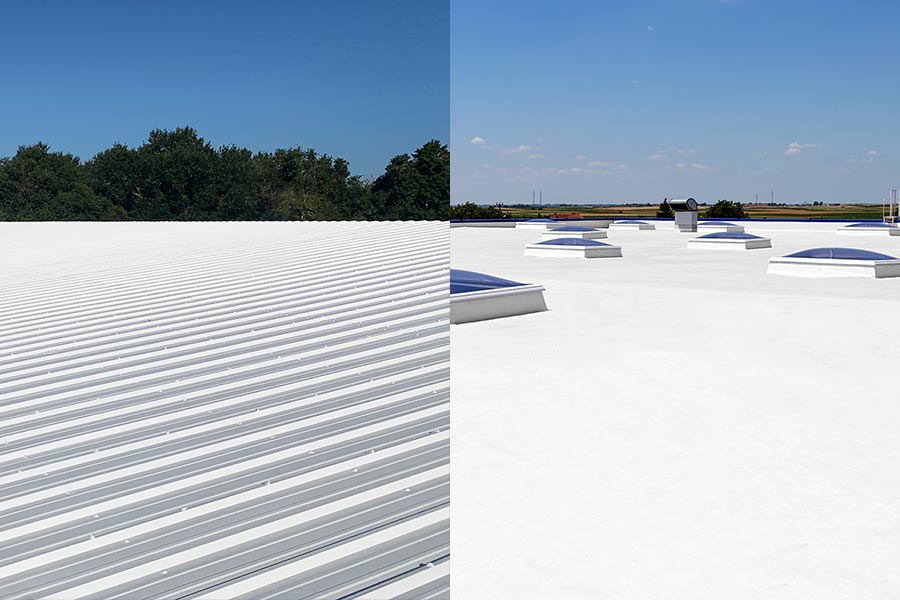
Comparing the financial aspects of roof restoration versus replacement can assist businesses in making knowledgeable decisions about their roofing investments. Restoring roofs with coatings can serve as a cost-efficient alternative to complete roof replacement, offering similar benefits at a reduced cost.
In this section, we will discuss the cost-benefit analysis of roof restoration and when to choose between coating or replacing a roof.
Cost-Benefit Analysis of Roof Restoration
Roof restoration can be a more cost-effective solution compared to full roof replacement. The national average cost of roof repair is approximately $950, while roof replacement typically costs around $9,000 on average. Roof restoration with coatings not only offers similar benefits at a lower price point but can also extend the life of the existing roof and enhance its performance.
By comparing the costs and benefits of roof restoration and replacement, businesses can make informed decisions about their roofing investments.
When to Coat vs. When to Replace
Discerning when to coat or replace a roof is key to optimizing return on investment and assuring long-lasting performance. Factors to consider include:
-
- The age of the roof
-
- The presence of algae growth
-
- Dried and cracked shingles
-
- Curling shingle edges
-
- Structural issues like waviness or dips
Taking these factors into consideration will help you make an informed decision between coating or replacing a roof.
A professional inspection is recommended to determine the best course of action, as it can detect potential issues that may not be visible to the untrained eye.
Strategic Planning for Roof Coating Projects
Strategic planning for roof coating projects requires well-timed investments and the selection of suitable products and partners. Properly timing roof coating investments can maximize savings and minimize disruptions to business operations.
In addition, choosing the right products and partners for roof coating projects is essential for achieving the desired performance and financial outcomes.
Timing Your Investment
The best time for roof coating investments is during the summer when temperatures reach at least 40 degrees Fahrenheit, guaranteeing perfect conditions for the application and curing process. The installation of a roof coating system generally takes between 1 to 5 days, depending on the size and complexity of the roof.
By timing your investment to coincide with the optimal conditions and minimizing disruptions to your business operations, you can maximize the long-term cost savings provided by roof coatings.
Selecting the Right Products and Partners
Opting for the appropriate products and partners for your roof coating project is necessary to achieve the intended performance and financial results. Several roof coating products on the market offer varying levels of performance and cost, such as acrylic, silicone, and polyurethane coatings. Collaborating with professional roof coating companies can provide numerous advantages, such as improved energy efficiency, increased roof durability, improved protection, specialist knowledge and experience, and expedited response times.
Summary
In conclusion, commercial roof coatings offer a multitude of benefits, from long-term cost savings to environmental sustainability. By understanding the economics of roof coatings, businesses can make informed decisions about their roofing investments and maximize the value of their commercial roof coatings. Whether opting for cool roofs, green roofs, or strategic planning for roof coating projects, the insights provided in this blog post can help businesses unlock significant savings and contribute to a more sustainable and environmentally friendly building.
When it comes to commercial roof coating, SmartSeal is the top choice for St. Petersburg’s commercial roofs. Contact us today to get started.
Frequently Asked Questions
How do cool roofs help reduce energy costs?
Cool roofs minimize heat absorption by reflecting sunlight, reducing energy demand for cooling and lowering energy bills.
What are the maintenance savings associated with roof coatings?
Roof coatings can provide significant maintenance savings, with an estimated 25 cents per square foot saved annually.
What is the typical cost of roof restoration vs. roof replacement?
On average, roof repair costs around $950, whereas roof replacement costs around $9,000.
Are there any government incentives or rebates available for cool roofs?
Yes, there are government incentives and rebates available for cool roofs, such as federal income tax credits and state-specific incentives like the DWP in Southern California.
When is the best time to invest in roof coatings?
Summertime is the best time to invest in roof coatings when temperatures are at least 40 degrees Fahrenheit for optimal application and curing.

